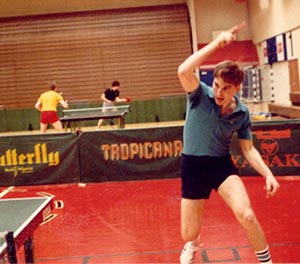Illegal Hidden Serves: Letter to the ITTF
Two years ago I had an email with a pair of ITTF officials over fixing the problem with hidden serves. Both said they were working on it, but nothing so far as happened. So yesterday I sent them the following email. If nothing happens, I may once again go to the USATT Board on this. Previously I went to the Board and asked them vote to ask our Umpires and Referees Committee (then the Officials Committee) to enforce the serving rules as they are written, but it lost 6-1-1 as they didn't want to handicap USA players, since to compete internationally they'd both need their own illegal hidden serves and be able to return them. This time I'd simply ask the Board to send a note to the ITTF, imploring them to take action on this issue. My email below could be the draft of such a note.
Dear [NAMES WITHHELD],
I presume nothing has happened regarding fixing the problem of hidden serves? Coaches still have to go through that uncomfortable routine with their top juniors and parents where we explain that if they want to compete on an equal basis, they'll have to cheat as the top players do by illegally hiding their serves. Nearly every top player obviously hides their serves, and umpires, who cannot really tell if the serves are visible are not, simply do not follow the rules that specify that if they aren't sure whether the serve is legal, they must warn and then fault the player.


 Photo by Donna Sakai
Photo by Donna Sakai


